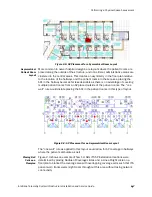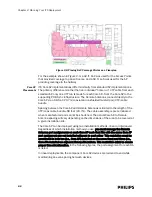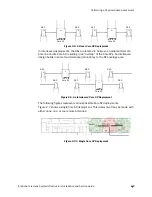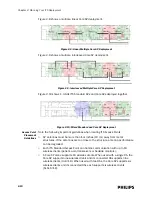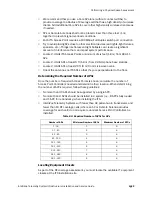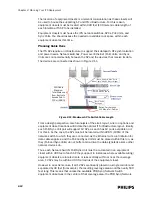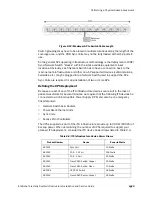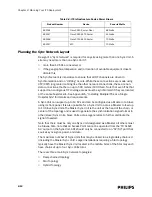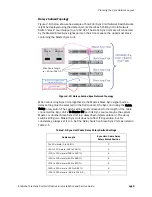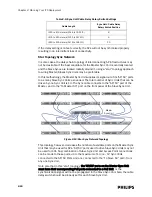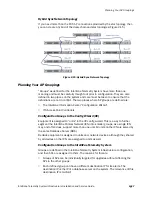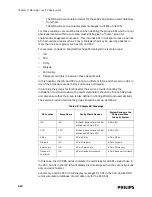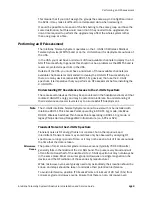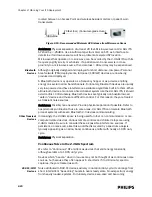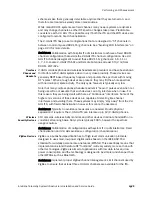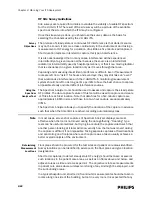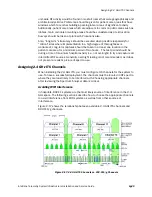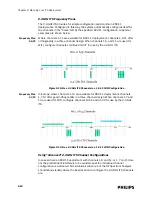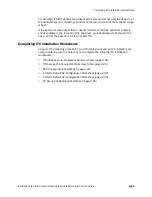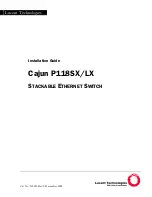
Performing an RF Assessment
IntelliVue Telemetry System Infrastructure Installation and Service Guide
2
-
21
schemes make them generally detectable anytime that they are turned on, and
therefore are treated as steady state noise sources.
While many 802.11 systems are fixed channel, many newer systems are dynamic
and may change channels as other RF spectra changes take place. Predictable,
coexistence with 2.4 GHz ITS is possible only if both the ITS and the WiFi device are
configured for static, fixed channelization.
The 2.4 GHz ITS has pre-set configurations that are designed to “fit” channels in
between commonly used 802.11b/g channels. See “Avoiding WiFi Interference” on
page 2-23 for more details.
Avoidance: Collaboration with hospital IT administrators to achieve a fixed 802.11
channel configuration that avoids the 2.4GHz ITS channel configuration. Use 2.4
GHz ITS channel assignment to avoid these 802.11 b/g channels: 1, 6, 11 or
1, 7, 13. Locate 2.4 GHz ITS APs and Remote Antennas at least 6 ft (2 m) from
802.11 Wi-Fi APs.
Cordless
Phones and
Headsets
2.4GHz cordless phones and wireless headsets are prevalent and have been shown
to interfere with 2.4GHz systems when in very close proximity. These devices are
generally DECT-based frequency hoppers and populate the spectrum with moving
RF “spikes.” When enough devices are present, they may fill the whole spectrum
with narrow-band, spike activity. The duty cycle however is typically very low.
Note that many cordless phones/headsets will emit “beacon” pulses even when not
being used. Do not assume that such devices can only interfere when in use. For
this reason, they are being dealt with here as “Continuous” interferers. Some of the
higher end versions of these devices are capable of detecting like-channel
interferers and avoiding them. These systems may simply “stay away” from the 2.4
GHz ITS, with fixed channelization, however this cannot be assumed.
Avoidance: Typically, no avoidance measures are needed. Provide physical
separation if required. The 2.4 GHz ITS can tolerate up to 12 (2.4GHz) phones.
Wireless
Security Devices
X10 cameras, wireless baby monitors and other devices dominate bandwidth on a
constant, streaming basis. Duty cycle is typically 100%, however the spectrum
usage is narrow.
Avoidance: Collaboration of configurations with system IT or administrators. Fixed
channelization and 2.4 GHz avoidance configuration (channelization).
ZigBee Devices
ZigBee is a published specification set of high level communication protocols
designed to use small, low power digital radios based on the IEEE 802.15.4
standard for wireless personal area networks (WPANs). This essentially means that
implementations (and therefore RF “footprints”) will vary widely, more so than with
other technologies. ZigBee is aimed at applications with low data rates and low
power consumption and the technology is designed to be simpler and cheaper than
other WPANs such as Bluetooth.
Avoidance: Implement proper ZigBee channel management. Limit channels used by
ZigBee to ensure that at least three 2.4 GHz channels are available for the ITS.
Summary of Contents for IntelliVue Telemetry System Infrastructure
Page 8: ...viii Contents ...
Page 14: ...xiv About This Guide ...
Page 100: ...3 22 Chapter 3 Installing and Configuring the ITS Figure 3 10 APC Filter Configuration Screen ...
Page 162: ...5 12 Chapter 5 Troubleshooting and Testing ...
Page 168: ...A 6 Chapter A Installing Multiple ITSs at a Single Hospital Site ...
Page 180: ...Index 8 Index ...

